A man is murdered. His organs are surgically removed and dispersed. His wife and children struggle to put his life back together again, to somehow reverse what was done. To do this, they elicit the aid of his organs, which have become sentient. His wife forms the shape of a dragon, his son a fly, and his daughter a green cloud. Together with his brain, they devise a plan to reunite them all, to remember that they are one person, and to awaken. It won’t be easy.
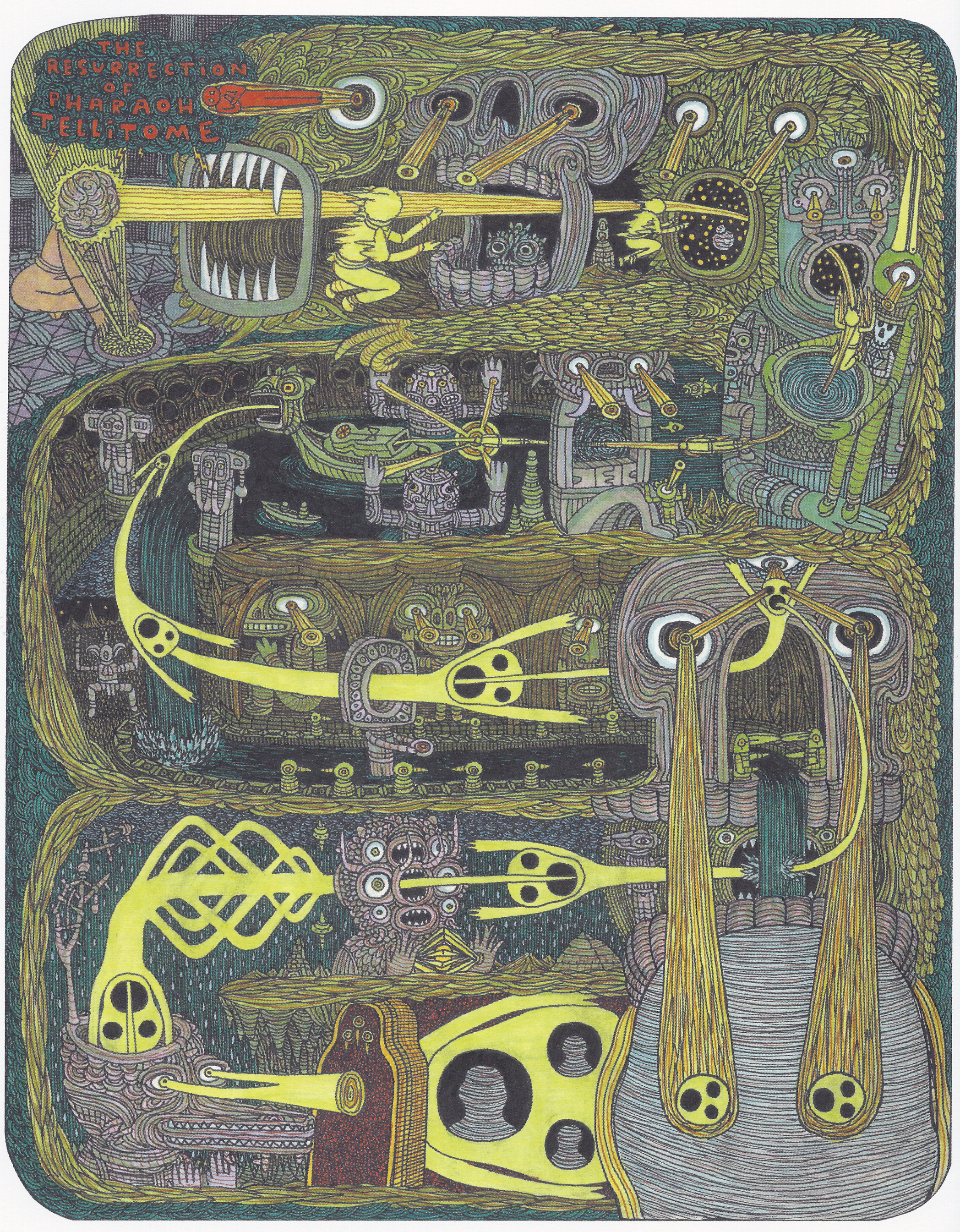
Theo Ellsworth’s The Understanding Monster reads like a Silver Age space opera if Lee and Kirby were replaced by Borges and Burroughs. We are plunged into a crisis (the mouse Izadore must turn the negative corner!), whose resolution leads to another crisis, followed by another. The dialogue is full of exclamation points. We uncover a rich sci-fi universe with its own strange physics, shape-shifting characters, monsters, and ghosts. But the challenges and threats are all internal and rooted in psychological fears. Instead of the Kree-Skrull war, Ellsworth’s characters promise an end to “the brain war.”
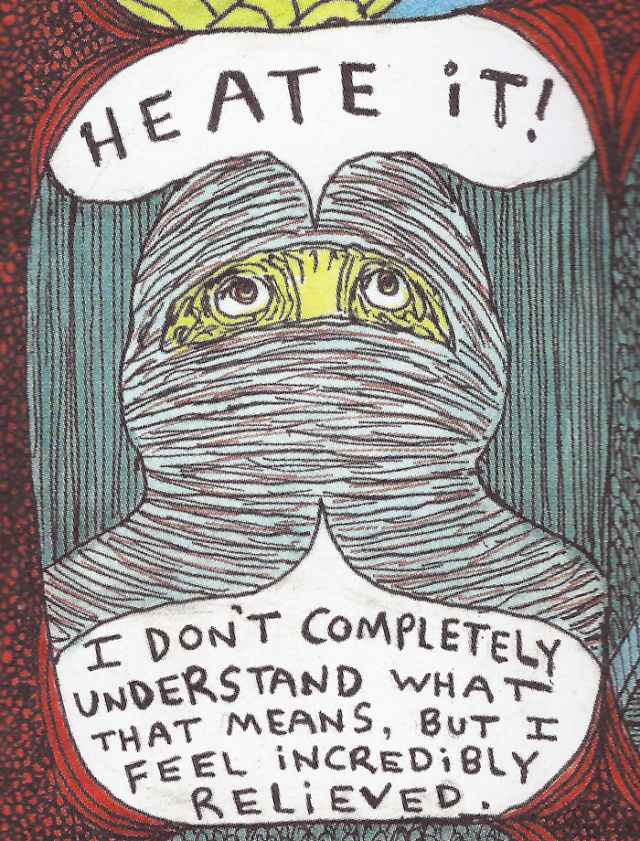
This universe is a puzzle box full of hyphenated terminology like “time-crystals,” “mind-broadcasts,” “ghost-robots,” “hello-scans,” “hyper-intelligence beans,” and the dreaded “techno mind-virus.” We piece together clues in the dialogue and images to figure out what is going on. Ellsworth fills the considerably dense pages with them. We are introduced to time-crystals long before we know their name or purpose. We see odd creatures perform inexplicable actions without our understanding of who they are or what they are up to. Most of the time, we are told what the goal is, the purpose for moving forward, but rarely do we know why.
The second of three planned books is out this week. Book Two fills in a lot of the missing pieces and informs nearly all of the action in the first book, providing some much desired exposition. The answers themselves lead to more questions, but these questions propel the story forward. All of the crises in the story are about progressing from a state of confusion to one of awareness (there is even a villain named General Confusion). The end goal is to remember, to piece together who the protagonist is. Before we get there, Ellsworth has fun with our disorientation, peppering the narrative with bizarre space creatures and jokes. But what may appear at first to be non sequiturs soon earn a new relevance. For example, there is a bathroom that threatens to envelop the entire house (“and it will be a disgusting bathroom”). But then we learn that the protagonist is a house gnome, a being that has a “house-self and a person-self that co-exist together.” He later expresses concern about maintenance of the house because, whether he realizes it or not, he is a house.
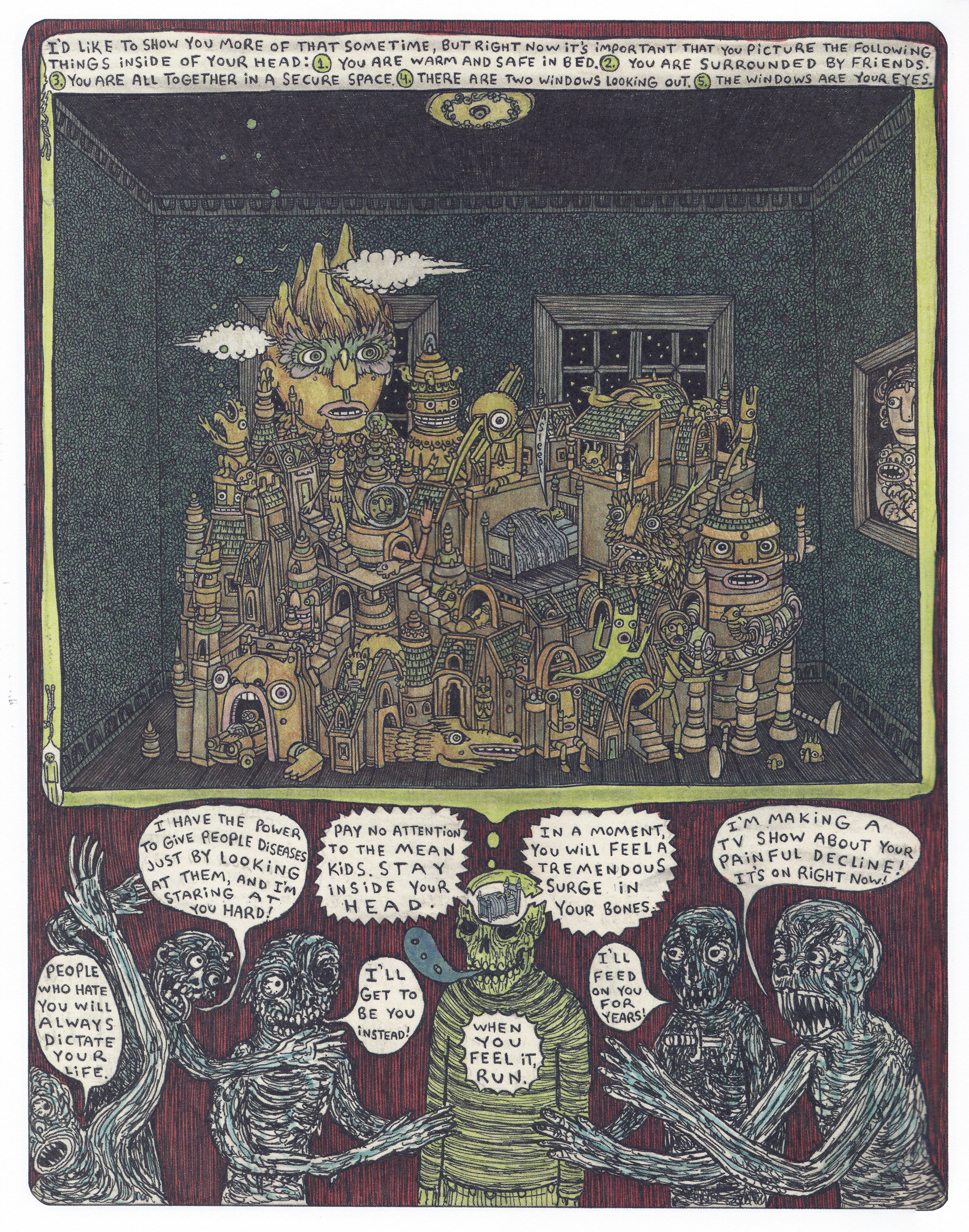
Beyond the genuine fun in his urgent dialogue and intricate artwork, Ellsworth draws us into caring about this mystery by constructing a mythology based on personal growth. The family members all practice a form of displacement where they can leave their bodies and travel with their minds to several dimensions in various forms. The protagonist’s essential problem is that he is so displaced that his self is in pieces, so he has forgotten who he is. His brain (in the form of a “multi-dimensional time detective” named Inspector Gimble) takes on the mission of reuniting the pieces (finding himself) but faces deep-seated obstacles.
In addition to toys that cause paranoia, these obstacles include the disease victims of “the mean kids’ ghosts” who spew messages of self-doubt and self-hatred. And that’s a real problem because the key to finding himself, the one missing piece to becoming whole again, is his creative drive, embodied by a red mouse named Izadore. Izadore is easily influenced by these strong negative beliefs; his journey is in constant threat of being sabotaged by them. They manipulate him, block him, and scare him into a state of paralysis (at best) and injury (at worst).
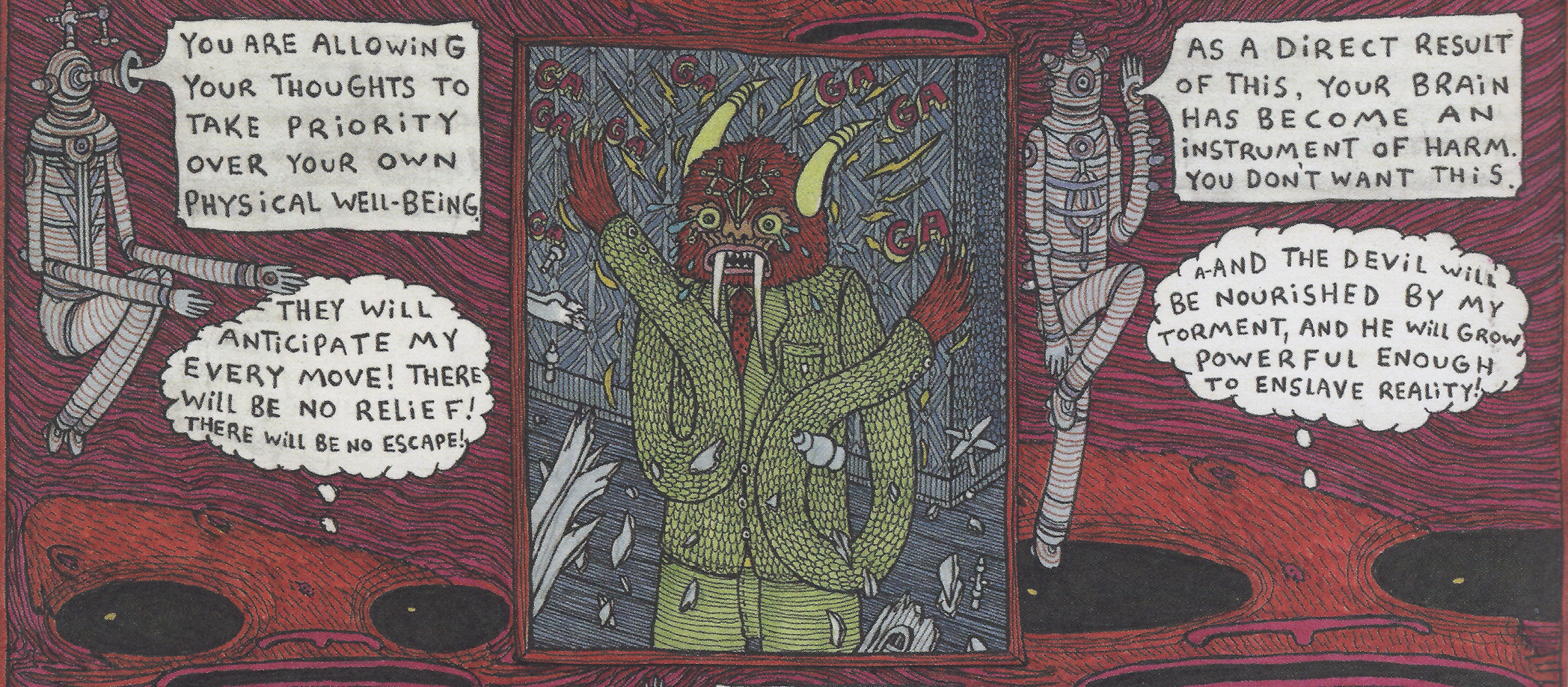
Izadore’s role as the missing piece was discovered by the daughter, nicknamed Minnow. In a trance, Minnow draws a comic that captures both the drive and frustration of making art. It’s about a magical mouse who can’t stop moving, drawing an invisible picture so big it covers the world. “Is he happy or scared?” she wonders. “Is he trying to get closer to a place or a person, or is he trying to get further away? Is he having fun?” In the end, his life’s work can be finally viewed by others but only from a great distance and for just five minutes.
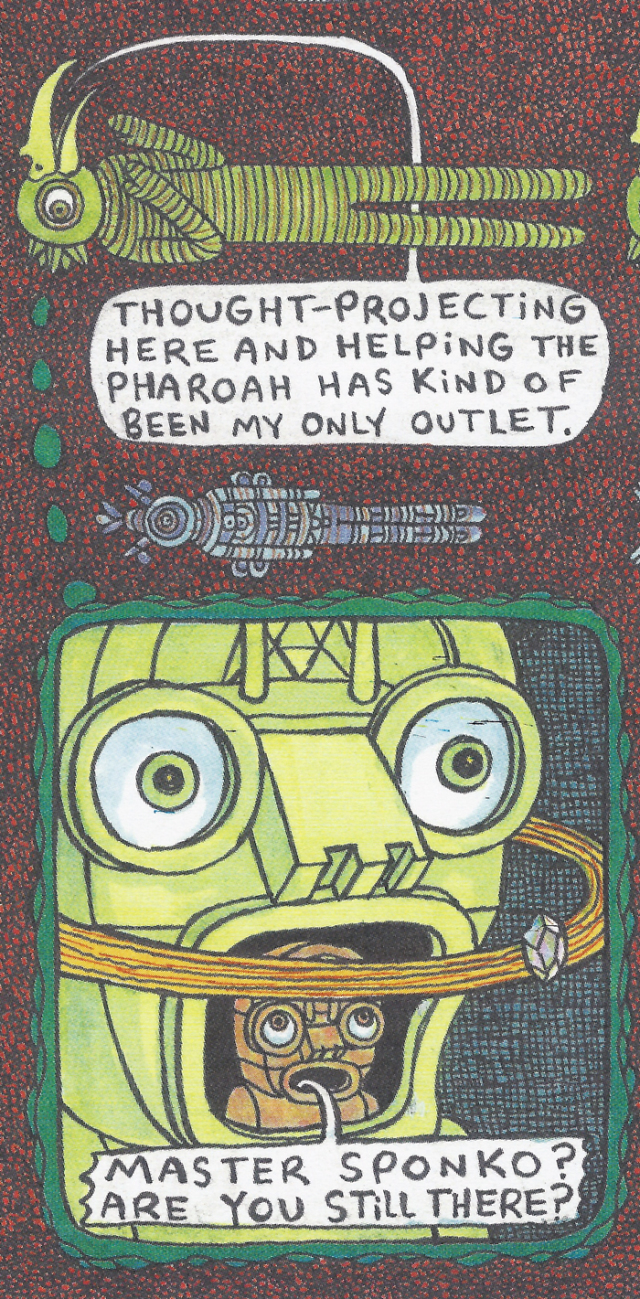
Minnow answers those questions about the mouse’s motivations, essentially, by pinpointing his creative drive as the missing link. Ursula Le Guin called imagination “a fundamental way of thinking, an essential means of becoming and remaining human.” Note Ellsworth’s characters realize that they cannot become a person without this foundation.
Art also plays a primary role in their communication with each other. To express any complicated ideas, they create movies, comics, cartoons, and exchange letters. Memories are stored in paintings. They communicate through toys and by broadcasting messages into each other’s minds. One character, Master Sponko, communicates with another by imaging him inside of a thought bubble. He describes their relationship in the terms of art consumption, admitting “I was pretty wrapped up in his quest.” The quest, they learn, can be interrupted and returned to later, with a tool that acts like a bookmark or a pause button.
The trials the organs face have physiological parallels. When trying to make a decision, listening to your gut means literally having a conversation with the intestines. Giving into paranoid anxiety causes harm to the character representing the stomach. And the organ most effected by the self-defeating thoughts of the mean kids’ disease victims is the heart who is trapped in the walls with them. Once freed from the walls and reunited with the others, they collectively sigh: “I have never felt so inside myself.”
Inspector Gimble assures us that the imagination, while lost, was still alive and active. It fled inwards, vowing “never to return to the outside world.” It was leading an imaginary life right under the noses of the mean kids, safe and hidden. Finding it was a challenge, and getting it to remember its purpose is the problem that Book One addresses. In Book Two, the characters are concerned with locating and awakening the real “you.” What this all means and what consequences it has, will presumably be the focus of Book Three.
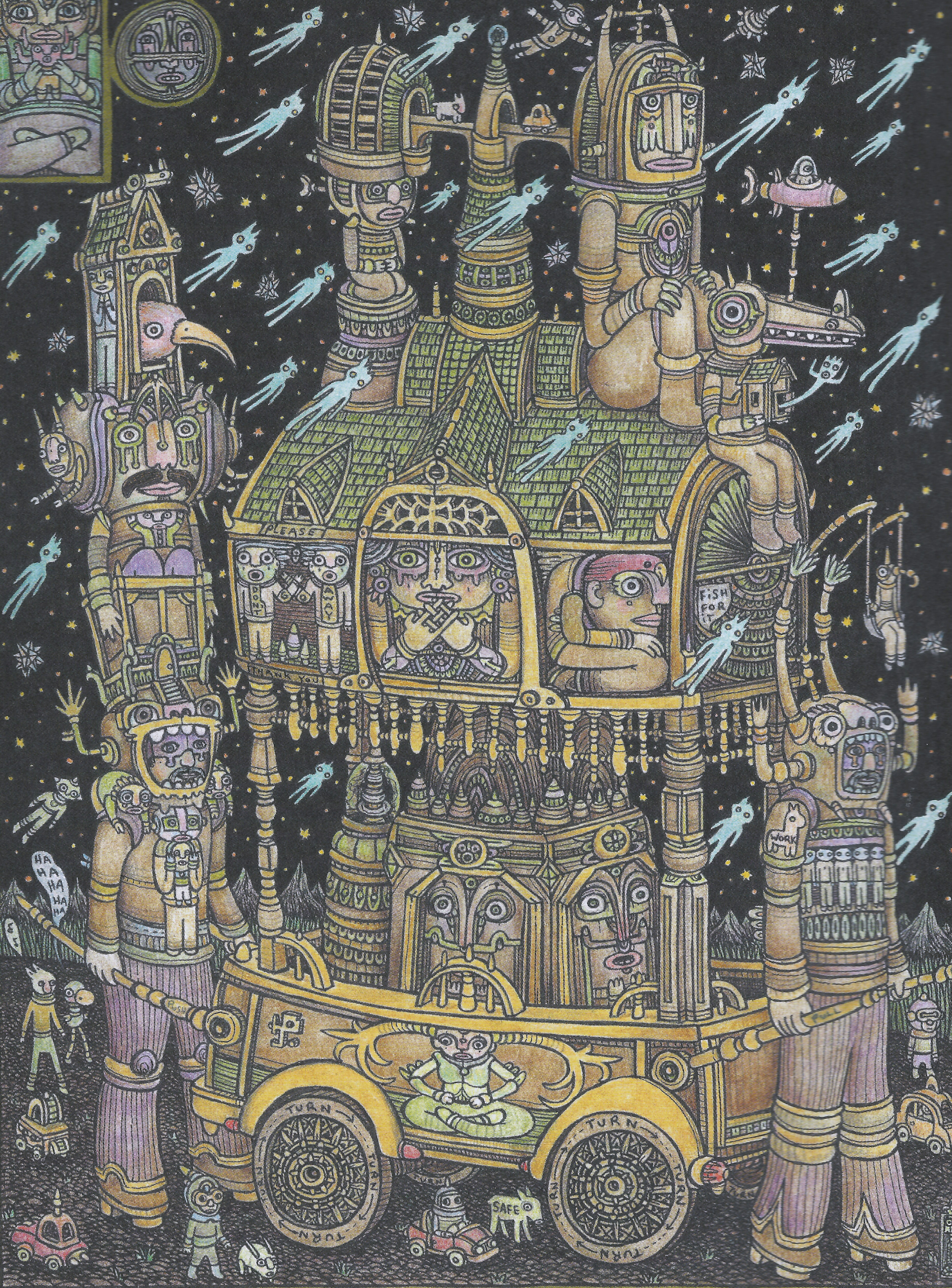
Because The Understanding Monster’s narrative is constructed as a puzzle that reveals more as the story progresses, and without having read the final book, it is dangerous to fully profess what it all “means.” I’m still not sure what a house gnome is. And I’ve been saying that his daughter is the helpful green cloud named Minnow but that’s my best guest; this hasn’t been made explicit. These are dense comics that reward re-rereading, even without the benefit of a hyper-intelligence bean. If the first book left you baffled, read the second and then return to it. There is one book left. The last of the monks of the imaginary man has sensed our presence and is on his way. Let’s find out what that means.
 Festival Season
Festival Season 

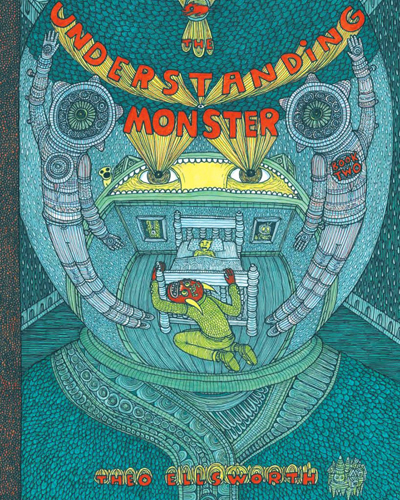



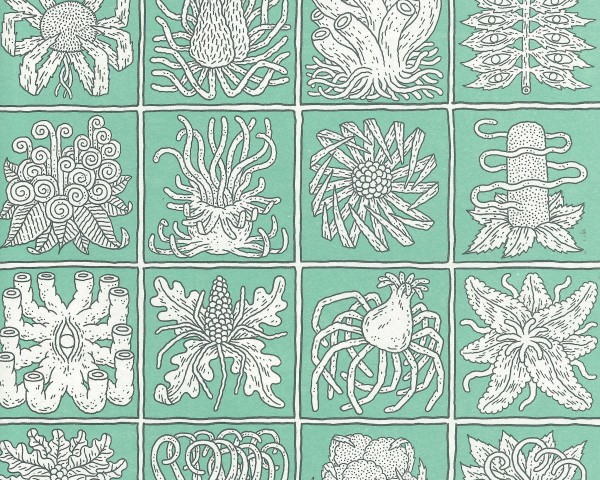
[…] Saturday. You can read reviews of the Understanding Monster Book Two at Sequential State and Festival Season. If you are called to adventure, you can go see Theo this weekend at Seattle’s beloved Short […]
[…] Inward Odyssey (The Understanding Monster by Theo Ellsworth) […]